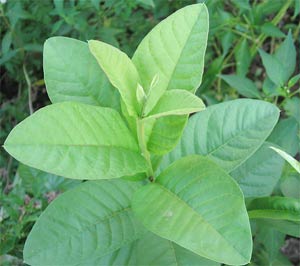Guava breeding techniques
A tropical tree belonging to the tough woody group (perennial woody body), guava has been grown widely all over our country for a long time. Through artificial selection, there are many varieties of guava such as guava, guava, guava, guava, etc. that are admired by many people.
As a component of closed ecosystems (VAC) and also ornamental plants (such as guava) for beautiful appearance (wrong when planted in pots) beautiful and fragrant flowers belonging to the wrong type of fruit, should be full of days The more you grow, the less you need to care for your employer, because of high adaptability, good tolerance to the disadvantages of externalities (living environment).
Breeding guava is easy in both ways: sexual and asexual reproduction.
Computed by taking seeds from natural ripe fruits (nine plants) from sunny mother trees aged 5-15 years (energizing). Select the big fruits and then add them, scraping the seeds and rubbing away the mucous skin to cover and dry them in the sun for brittle dryness and then storing them in a tight and dry place to ensure a high germination rate (up to 90%) after 1 - 2 years.
Sowing in the early spring, mid-summer when the seedlings are high from 15-20cm, continue to incubate on the soil, high and often moist after 1-2 months, then the throne (positioning) must be at least 4m from the original. (average 4.5 - 5m) for mature canopy closure does not occur survival competition (leaf-touching trees). Only after 3 - 4 years is fortune telling, seedlings grown from seeds have a very long life span (from tens to hundreds of years).
 Cloning is mainly by branching in the hot and humid season when the plant is plastic. Select the branches of " cake " (with the color of the root-tip of the middle skin, not being " rough ") in the fortune-telling mother tree to deliberately peel, clean " silk " (the meristem - floor statue) to avoid " leading water to scarring " and then leave plastic, forming scar tissue after 3 - 5 days to wrap soil and bundle of pots. This is a valuable experience of farmers in intensive areas such as Bo in Thai Binh. Should choose the sun-shaded branches (brightly lit) emitted in the east to the south enjoy the optimal microclimate, the thick bark contains a lot of resins, soon release and many roots. After 3 - 4 months, when a secondary root of spreading fur is spread like spider silk in the periphery, we cut down the earth. Cultivating guava by extracting (or cuttings, tissue culture, etc., if it is eligible to stimulate meristem tissue), "quickly eat" but also "quickly" because of the age of seedlings following the age of the mother tree only. early (degenerate). This is a quick supplement for the garden to harvest early.
Cloning is mainly by branching in the hot and humid season when the plant is plastic. Select the branches of " cake " (with the color of the root-tip of the middle skin, not being " rough ") in the fortune-telling mother tree to deliberately peel, clean " silk " (the meristem - floor statue) to avoid " leading water to scarring " and then leave plastic, forming scar tissue after 3 - 5 days to wrap soil and bundle of pots. This is a valuable experience of farmers in intensive areas such as Bo in Thai Binh. Should choose the sun-shaded branches (brightly lit) emitted in the east to the south enjoy the optimal microclimate, the thick bark contains a lot of resins, soon release and many roots. After 3 - 4 months, when a secondary root of spreading fur is spread like spider silk in the periphery, we cut down the earth. Cultivating guava by extracting (or cuttings, tissue culture, etc., if it is eligible to stimulate meristem tissue), "quickly eat" but also "quickly" because of the age of seedlings following the age of the mother tree only. early (degenerate). This is a quick supplement for the garden to harvest early.
Guava is not picky, very hydrophobic with chemical fertilizers (especially nitrogen because it causes bad leaves to grow and attract pests). If there is a lack of organic fertilizer, microbial NPK can be added at the rate of 10% in total and 5 - 7% of coal slag, 3 - 5 lime lime (ants lime) or mortar etc . to improve productivity and quality. Popularity of sunshine and soil is often "cool" (permissible soil moisture content ranges from 60 to 80% of saturated moisture, ie moisture content of the field). When trees over 10 years old, stemmed stemmed (shaggy shells), sweeping saturated lime water to prevent pests and increase light reflection helps the branches to be good photosynthesis.
- Techniques for growing Taiwanese guava in simple, high-yield pots
- The taste of guava from guava
- Cure diarrhea with guava
- Technology for pumping crab bricks, painting for guava
- Techniques of raising clean meat with yeast for microbiology
- He gave the Pfizer Prize for research on mosquito malaria transmission
- Successful breeding of wheat tolerates salinity
- Techniques of raising pure boar
- The non-seedy fruits harvest the
- Applying mixed fertilizer for tomatoes
- Photography techniques reveal every blood vessel inside the mummy
- Successful research on dolphin breeding techniques
 'Barefoot engineer' invents a pipeless pump
'Barefoot engineer' invents a pipeless pump Process of handling dead pigs due to disease
Process of handling dead pigs due to disease Radiometer
Radiometer Warp Engine: Technology brings us closer to the speed of light
Warp Engine: Technology brings us closer to the speed of light